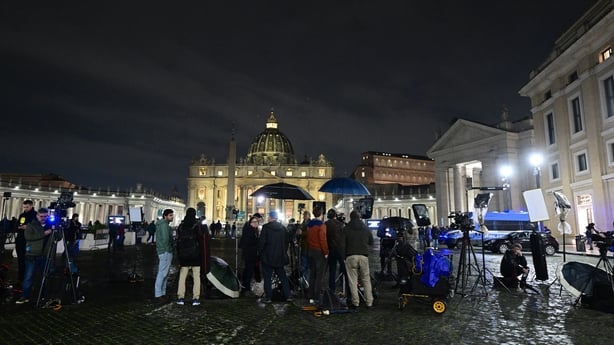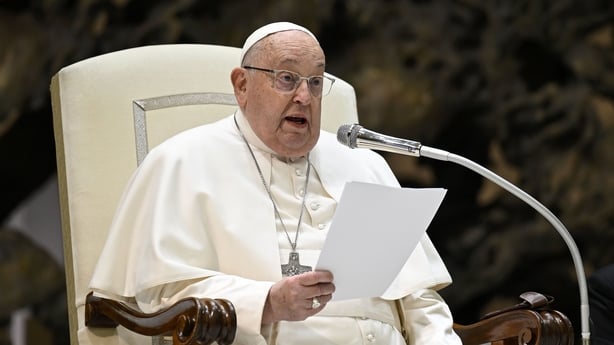The longest hospital admission of his almost 12-year papacy, so it is no surprise that the health of Pope Francis would dominate headlines across the world this week.
What was more surprising though was the amount of information about the Pope's health given in daily briefings by the Vatican and by the Pope’s doctors.
Often stark and sometimes blunt, the updates caused concern about the pontiff’s health at points but also marked a change in the way in which the Vatican communicated on such personal issues.
There has been a routine - a short morning bulletin with a more detailed clinical assessment issued in the evening.
The large number of journalists assembled near St Peter’s Square wait each evening for the latest update with some, like the revelation that the Pope had a "prolonged asthma-like respiratory crisis", causing concern about the 88-year-old pontiff who had part of a lung removed as a young man after he contracted pleurisy.
To many long-time Vatican watchers, the appearance of the word "crisis" in the statement caused nearly as much shock as the medical revelation.
Such forthright assessments have been frowned upon in the past, with it considered at best unseemly and at worst indecent that such medical details would be revealed.

At a press conference by the Pope’s doctors at Rome’s Gemelli hospital last week, medical staff said it was the Pope himself who had ordered daily updates.
Dr Sergio Alfieri, who leads the team taking care of Pope Francis and Dr Luigi Carbone, the Vice-Director of the Vatican health service spoke to journalists for over half an hour in a wide-ranging press conference which looked at both the Pope’s current condition and longer-term prognosis.
It is a significant departure and may reflect both a different approach under this current Pope to some of his predecessors as well as an increasing understanding by the Vatican of the dangers and reach of misinformation.
Thomas Reese, a Jesuit priest who has studied the papacy closely told the Reuters news agency that "the Vatican has finally learned that it is better to be forthcoming than to let conspiracy theorists fill the void".
Though speculation about the health of Pope John Paul II continued for years before the Vatican confirmed he had Parkinson’s disease, he had also allowed doctors to discuss his medical situation during several hospital stays during his 25-year papacy.

Having become Pope at the age of 58, the health of John Paul II became more keenly watched in the later years of his papacy.
Pope Francis though was elected at the age of 76 having already suffered significant health issues in his younger days, meaning that questions about his health and ability to maintain a punishing schedule dominated from the start of his time as the leader of the world’s 1.2 billion Catholics.
But the rise of disinformation in recent years has led to an awareness that institutions that might previously have baulked at sharing details may find erroneous details being spread very fast if there is no alternative.
The sudden death of Pope John Paul I in 1978, just 33 days after he was elected Pope, spawned a range of conspiracy theories far before anyone had ever thought of the phrase "internet sleuth".
In the years that followed many commentators would blame a failure of transparency as key among the reasons that so many theories around Pope John Paul I’s death sprang up.
It may be, at least in part, lessons learned from events like that which have helped the Vatican understand that more details are required to let people feel they are being included in the very real concerns surrounding the Pope’s health and wellbeing.




